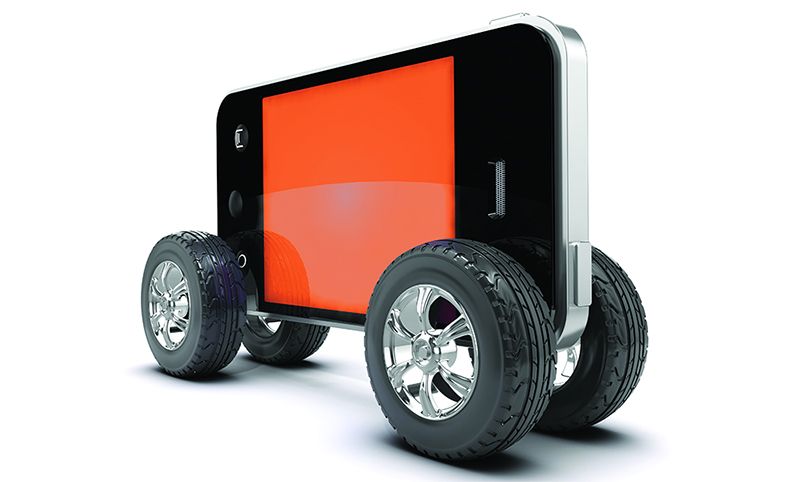Look around next time you’re sitting in traffic, and chances are you’ll see fewer young drivers than you used to. The boom of sharing economy brands such as Uber, Lyft, and Sidecar, coupled with financial pressures and Millennials’ desire to fund experiences rather than possessions, portends an impending tectonic shift in the transportation paradigm. In fact, Boston Consulting Group predicts that in five years, 35 million people globally will be using car-sharing services, up from roughly 6 million today.
This accelerating shift has automotive manufacturers looking for new and creative ways to maintain a dialogue with consumers who are less interested in owning a vehicle than they are in the broader concept of “mobility.” What these consumers are saying is, “I’m not interested in owning a vehicle, just help me get to where I want to go, in the way I want to go.”
In response, the major OEMs have already taken a number of steps: They have made large-scale investments in ride-sharing services, partnered with companies specializing in autonomous vehicles (including behemoth Google); purchased companies with assorted enabling-technologies, and launched trial programs where consumers can rent a vehicle directly from the OEM.

In fact, it seems barely a day goes by where there isn’t some news about these trends, or about connected cars, or a Jetsons-style transportation future. By any measure, it is an exciting time to be in the automotive industry.
Of course, one outcome that is already evident is that in the course of these new interactions with consumers, an enormous amount data will be used to facilitate these activities and record what is happening when they transpire.
Mobility apps for customer insights
As consumers download and use mobility-focused apps, they divulge much about their needs and preferences. They display their loyalty through the frequency of their activity; identify problems through their customer care inquiries, and reveal their feelings via pop-up surveys, ratings, and other feedback. To analysts and strategists, this is a treasure trove of data. And, it is easily captured by the app and by apps within the app. Of course, the key will be in turning this digital fodder into useful information that can continuously improve the consumer experience and lower interaction costs.
While there are myriad questions that mobility providers can pose, they can be summarized under the following high-level queries:
• Who is using the app and how is it being used?
• How do users feel about their experiences?
• Given what is learned from the first two questions,
how can the mobility experience be improved?
As for any app that is introduced, the number of mobility app downloads will only tell the first part of the story. Certainly, OEMs will want their app to be popular with consumers and for users to give it good ratings and social media props. This is how apps become widely used. However, consumers must see value in the app to be compelled to use it often—frequency of use is the foundation of its success. Moreover, the insights generated from active users will only accelerate further improvements.
Optimizing the mobility customer experience
Keeping customers engaged in a mobility app is a challenge that becomes more difficult as these apps proliferate and consumers try out one new app after new app. While users download on average nearly nine apps per month, 25 percent of installed apps are never used, and 26 percent of installed apps are only used once, according to Google.
OEMs can win this battle and optimize their customers’ mobility experiences by delving into and acting on that treasure trove of data mentioned earlier. Here are some of the basic analytical tasks that will be required:
1. Create new data repositories that integrate all customer-level data captured by a mobility app at the user level.
2. Define and monitor the key performance metrics that business decision makers need to continuously refine the mobility experience.
3. Use analytics to hunt for key insights about customer behavior, as well as predict and prescribe actions integral to customer engagement.
4. Apply customer insights in a communication engine to guide mobility customers through their journeys and enable timely, trigger-driven messaging and offers.
5. Track the types and frequency of customer support required by users and use this data to improve self-help mechanisms and live associate interactions.
6. Mine voice of the customer feedback via surveys, chat sessions, and calls to determine the attitudinal and psychographic factors associated with app usage, and leverage these insights to reduce friction in the user experience and increase satisfaction and advocacy.
7. Construct a model of customer flows, activities, and spending to understand the financial impacts associated with the product, and conduct scenario analysis of the key performance indicators.
8. Repeatedly re-examine whether and how the mobility service is meeting its business objectives.
This all sounds straightforward, but carrying out these tasks takes concerted effort. OEMs certainly know what is at stake and indications are they are girding for the challenge. Already attuned to the explosion of data associated with their efforts in autonomous vehicle technology, they are starting to merge the newly generated app data with their traditional customer data banks and mine the combination. They are also re-examining what constitutes success in this new mobility world, where vehicle sales may not be quite as paramount and new revenue sources will be asked to pick up the slack. Frankly, it will probably be some time before OEMs master all of the activities noted above. And that’s OK right now, because they are all roughly in the same boat and just beginning this transition as an industry.
The most successful manufacturers will be those that unlock the key to the mobility customer relationship, figure out how to be continuously relevant, and deliver critical services easily and conveniently. In a world of many choices, tailoring each customer’s experience to his or her particular desires is the price for loyalty.
To get there, OEMs must be data-rich, information-savvy, and know how to apply data and insights throughout their customers’ journeys. This will take extraordinary coordination and planning across many departments and functions—customer management, IT, analytics, app development, marketing, finance, user experience, and so on. Having a slick mobility app is not enough.






